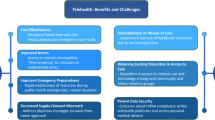Abstract
Timely public health interventions reduce heat-related illnesses (HRIs). HRI emergency department (ED) visit data provide near real-time morbidity information to local and state public health practitioners and may be useful in directing HRI prevention efforts. This study examined statewide HRI ED visits in North Carolina (NC) from 2008–2010 by age group, month, ED disposition, chief complaint, and triage notes. The mean number of HRI ED visits per day was compared to the maximum daily temperature. The percentage of HRI ED visits to all ED visits was highest in June (0.25%). 15–18 year-olds had the highest percentage of HRI visits and were often seen for sports-related heat exposures. Work-related HRI ED visits were more common than other causes in 19–45 year-olds. Individuals ≥65 years were more likely admitted to the hospital than younger individuals. The mean daily number of HRI ED visits increased by 1.4 for each 1°F (degree Fahrenheit) increase from 90°F to 98°F and by 15.8 for each 1°F increase from 98°F to 100°F. Results indicate that HRI prevention efforts in NC should be emphasized in early summer and targeted to adolescents involved in organized sports, young adults with outdoor occupations, and seniors. At a maximum daily temperature of 98°F, there was a substantial increase in the average daily number of HRI ED visits. ED visit data provide timely, sentinel HRI information. Analysis of this near real-time morbidity data may assist local and state public health practitioners in identification of HRI prevention strategies that are especially relevant to their jurisdictions.




Similar content being viewed by others
References
Lugo-Amador, N. M., Rothenhaus, T., & Moyer, P. (2004). Heat-related illness. Emergency Medicine Clinics of North America, 22(2), 315–327.
Wexler, R. K. (2002). Evaluation and treatment of heat-related illnesses. American Family Physician, 65(11), 2307–2314.
Centers for Disease Control, Prevention (CDC). (2010). Heat illness among high school athletes—United States, 2005–2009. Morbidity and Mortality Weekly Report, 59(32), 1009–1013.
Bytomski, J. R., & Squire, D. L. (2003). Heat illness in children. Current Sports Medicine Reports, 2(6), 320–324.
Centers for Disease Control, Prevention (CDC). (2008). Heat-related deaths among crop workers–United States, 1992–2006. Morbidity and Mortality Weekly Report, 57(24), 649–653.
Centers for Disease Control, Prevention (CDC). (2002). Heat-related deaths–four states, July-August 2001, and United States, 1979–1999. Morbidity and Mortality Weekly Report, 51(26), 567–570.
O’Neill, M. S., Carter, R., Kish, J. K., et al. (2009). Preventing heat-related morbidity and mortality: New approaches in a changing climate. Maturitas, 64(2), 98–103.
Frumkin, H., Hess, J., Luber, G., Malilay, J., & McGeehin, M. (2008). Climate change: The public health response. American Journal of Public Health, 98(3), 435–445.
O’Neill, M. S., & Ebi, K. L. (2009). Temperature extremes and health: Impacts of climate variability and change in the United States. Journal of Occupational and Environmental Medicine, 51(1), 13–25.
Skiles, M. P., Schinasi, L., Waller, A.E., Ising A., Tintinalli, J. E. (2010). The UNC Department of Emergency Medicine Carolina Center for Health Informatics Report, NC DETECT Emergency Department Data: 2008. Chapel Hill (NC): Carolina Center for Health Informatics, Department of Emergency Medicine, University of North Carolina at Chapel Hill.
United States Census Bureau. Annual Estimates of the Population for Counties of North Carolina April 1, 2000 to July 1, 2009. Retrieved from http://quickfacts.census.gov/qfd/states/37000lk.html.
Kilbourne, E. M. (2002). Heat-related illness: Current status of prevention efforts. American Journal of Preventive Medicine, 22(4), 328–329.
Environmental Protection Agency (2006). Excessive Heat Events Guidebook. Retrieved from http://www.epa.gov/heatisld/about/heatguidebook.html.
Triantafillou, S. A. (2003). North Carolina’s migrant and seasonal farmworkers. North Carolina Medical Journal, 64(3), 129–132.
Silberman, P., Bazan-Manson, A., Purves, H., et al. (2003). North Carolina Latino Health, 2003: A report from the Latino health task force. North Carolina Medical Journal, 64(3), 113–121.
Acknowledgments
We would like to thank the Southeast Regional Climate Center for providing temperature data; Christopher Fuhrmann for expert advice and review of the manuscript; and Rachel Janke for assistance with figure formatting. We would also like to acknowledge the NC Public Health Data Group and NC DETECT for providing the emergency department visit data.
Conflicts of interest
The authors have no conflicts of interest to report.
Author information
Authors and Affiliations
Corresponding author
Rights and permissions
About this article
Cite this article
Rhea, S., Ising, A., Fleischauer, A.T. et al. Using Near Real-Time Morbidity Data to Identify Heat-Related Illness Prevention Strategies in North Carolina. J Community Health 37, 495–500 (2012). https://doi.org/10.1007/s10900-011-9469-0
Published:
Issue Date:
DOI: https://doi.org/10.1007/s10900-011-9469-0




